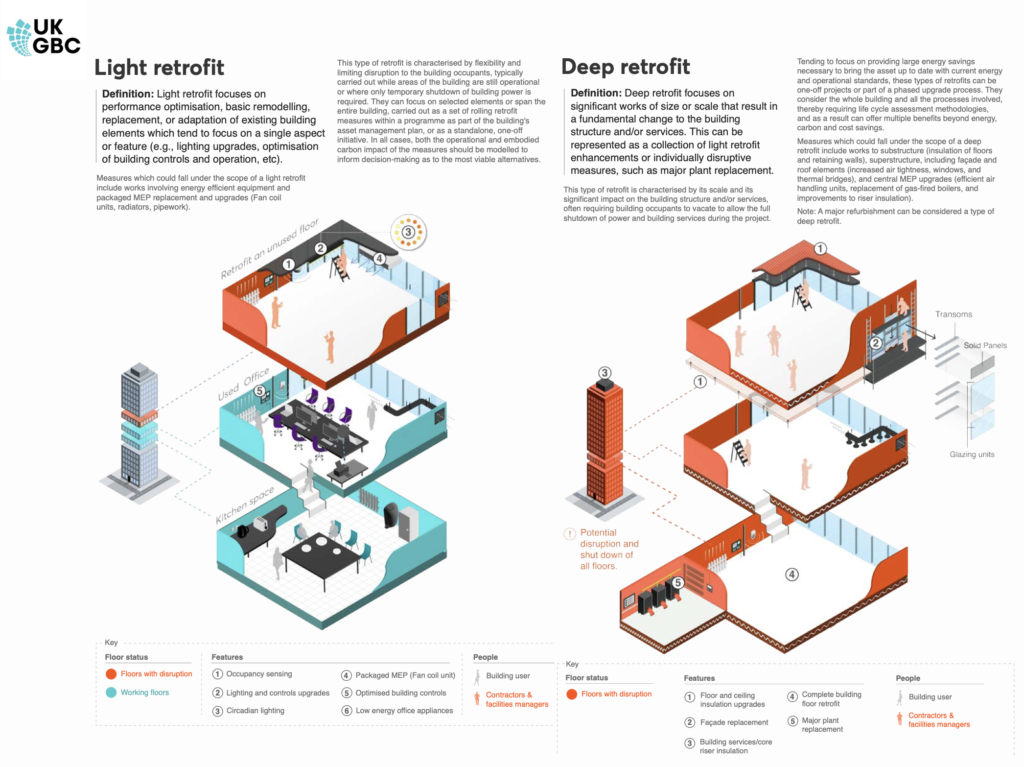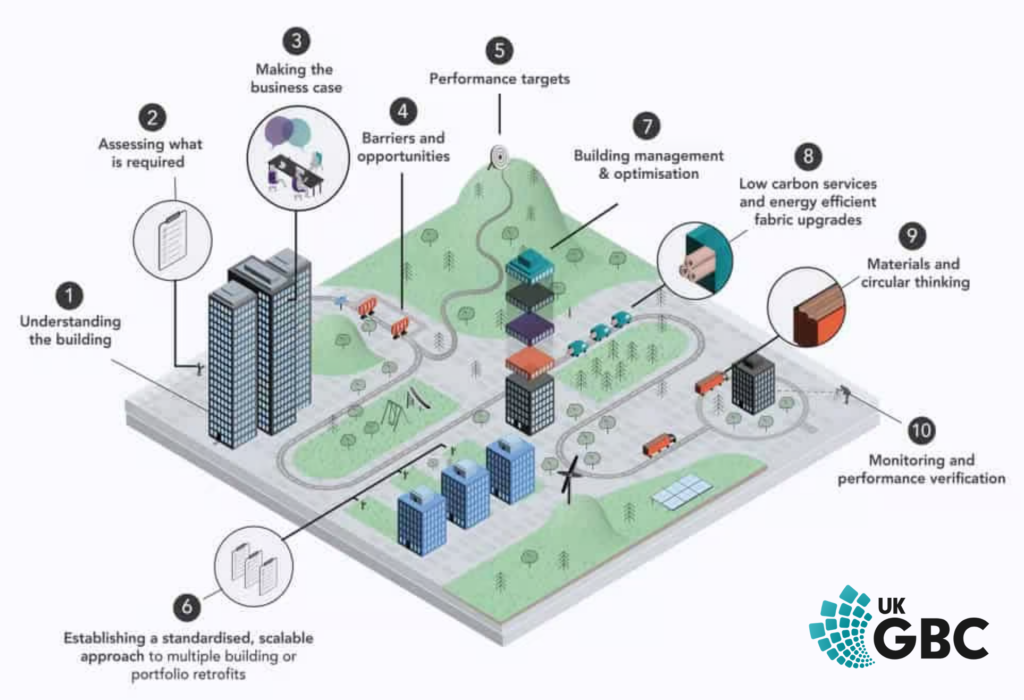
For a large part of this year I have been speaking to stakeholders across the smart building ecosystem about retrofitting. That has included facilitating round tables that I have been writing about for Smart Buildings Magazine (see here and here), as well as curating panels including the Why is Retrofit Not Taken More Seriously in the Climate Change Conversation? on at the recent Smart Buildings Show.
That outreach had formed part of an attempt to instigate a collaborative initiative dedicated to the creation of a definitive guide – a comprehensive report featuring the best practices, strategies, and case studies related to commercial smart building retrofitting. However, finding funding for that in this current climate was just too challenging.
It’s a shame because that what was establish was a definite need and opportunity based on the following rationale:
In nearly every smart buildings presentation you will find an oft quoted statistic from the UN Environment Programme about how nearly 40% of global emissions come from real estate. There is, however, another important one from the World Economic Forum about how approximately 80% of the buildings we have today still being in use in 2050 and how 75% of that building stocking the EU consider energy inefficient.
Yet despite industry understanding about that need, and all the talk about the opportunity, there is a surprising lack of information and guidance on the retrofitting of smart buildings. That is a potential barrier for their adoption, particularly as part of the drive towards net zero.
The increasingly multifaceted nature of the smart building journey, involving an ever-larger number of stakeholders, is also making the retrofit process more complex.
While the rapid development of smart buildings is widely recognized within the industry, guidance on effective strategies for retrofit of existing structures – particularly those focussed on sustainability and the pursuit of net zero – is surprisingly scarce.
As part of trying to find funding for a market report from research analysts, I was looking for sponsored features/contributions on the suggested themes below:
- People & Process (Plugging workforce & Skills Gaps)
- Retrofit Road Maps & Design Guidelines
- Examples of Scalable Innovation
- Identifying Opportunities for Rapid Returns on Investment
- Data Priorities & Best Practice for Building Data management in retrofit
- Agile Methodologies for Rapid Prototyping
- Legislation, policies, and best practices that guide retrofitting processes.
- Case studies that detail successful retrofits, with a focus on the challenges faced, solutions employed, and evidence of tangible outcomes.
- Exploration of Innovative financing models that can help in the transition to smart buildings.
These themes were based on feedback from a series of workshops mentioned above (among other material). They continue to be some of the lenses by which I look at Smart Buildings given the perfect storm driving the need and opportunity for retrofitting, i.e. the rise in interest rates, sustainability and the post-pandemic Work From Home revolution.
I’ve shared the graphic above because there was a terminology issue around whether retrofit, refurbishment or regeneration were better ways of describing the strategies behind the repurposing of existing property assets. It’s from the Delivering Net Zero: Key Considerations for Commercial Retrofit report by the UK Green Building Council (UKGBC). In it they make the distinction between Light and Deep Retrofitting featured in the graphic above. The report also includes the graphic below highlighting the key considerations for low carbon commercial retrofit:

From what I understand the UKGBC are also planning to release a report on the costing of retrofitting. I mention this because on one hand the way they look at retrofitting still frames it around (energy) Efficiency and drive towards net zero, rather than the broader Effectiveness consideration I have mentioned in previous posts and written about here. The point being that regardless of how efficient you make a building with technologies, materials or otherwise, they are neither effective nor sustainable unless occupied.
That Effectiveness consideration is where the likes of the International WELL Building Institute‘s (IWBI) WELL rating standard comes in rather than just those most sustainability-focused ones like LEED, BREEAM, Green Star, RESET, NABERS, etc (see IWBI’s WELL crosswalks and alignments here).
But the other reason I mention this is because of something Fiona Sawkill at British Land mentioned in the panel I recent moderated mentioned above. And that’s how her team are increasingly using the term Smart Enablement rather than Retrofit. That seems partly about avoiding getting bogged down in which R to use to best describe the repurposing of assets (see above). It’s also about that Smart Enablement covering both the Efficiency and Effectiveness sides in order to get buy in. That could be an important consideration for those looking at Costing and Finance Models (innovative ones or otherwise).



